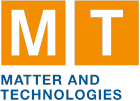Speaker
Theresa Brümmer
(DESY)
Description
The combination of laser-wakefield acceleration and Thomson scattering (TS) driven by one high-power laser allows for all-optical brilliant X-ray sources of compact design. Such source designs enable the clinical implementation of X-ray-based medical imaging modalities such as X-ray fluorescence imaging (XFI). XFI offers the in-vivo localization of functionalized gold nanoparticles (GNPs) with high sensitivity, temporal and spatial resolution at low dose exposure.
This requires hard X-ray sources (~100 keV) of specific design parameters, i.e. a pencil-shaped X-ray beam within a small bandwidth and a high photon flux to achieve feasible exposure times.
Thus, optimization of the TS process is required to enhance the X-ray source to fulfill the given criteria.
In this poster we show the techniques employed for the determination of the best laser and electron parameters. The design concept and simulation results for a first proof-of-principle experiment are presented. Electron focusing via an active plasma lens allows for single-element symmetric focusing on the one hand. On the other hand X-ray bandwidth control for broadband electron energy spectra (no energy spread limit) is achieved.
Author
Theresa Brümmer
(DESY)
Co-authors
Prof.
Florian Grüner
(CFEL / UNI-HH)
Jens Osterhoff
(DESY)
Dr
Kristjan Poder
(DESY)
Mr
Simon Bohlen
(DESY - FLA)
Theresa Staufer
(University of Hamburg)

